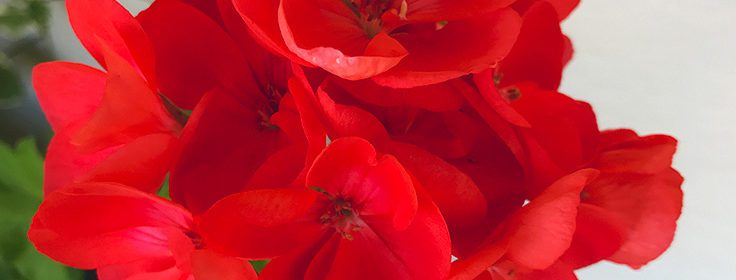Dealing with Fungus Gnats

Do you bring in plants that were outdoors during the spring and summer months? And do suddenly end up with tiny flies indoors that drive you insane? Well, those are fungus gnats. And yes, they used to drive us nuts… that is, until I discovered a simple, organic solution to the problem.
Last winter, I had brought my hanging baskets of ivy geraniums (Pelargonium peltatum) indoors to overwinter because other methods of overwintering them hadn’t worked for me. Within a few days, there they were: these tiny gnats flying in our faces, trying to fly up our noses, always seemingly maneuvering out of the way as we attempted to slap them into oblivion.
And may I just mention that they particularly drive Bill (my wonderful husband) crazy? As this year’s garden season started to wind down, this problem was on my mind and I was really hoping to do something about it. After a bit of research, I came across what sounded like a promising solution.
An organic control for fungus gnats!
You’ve probably heard of Bt (Bacillus thuringiensis), right? That is a bacteria that is harmless to humans but deadly to the larval (worm) stage of insects. For example, it works great for cabbage worms and tomato hornworms.
Well, there’s a strain of Bt called israelensis that is effective against the larvae of fungus gnats, white flies and mosquitoes. I located a product called Mosquito Bits that contains granules coated with Bt israelensis. To prevent fungus gnats, all you have to do is sprinkle the granules over the surface of the flower pot you’ve brought indoors, water the pots regularly, and presto! No (or very few) fungus gnats! How cool is that?
The difference this winter is incredible. The directions indicate you should reapply the granules a second time if you start seeing fungus gnats again after about 3 weeks, although I haven’t had to do that. I’m very impressed!
If you’d like to learn more about fungus gnats, there is a page devoted to them in my Organic Pest Control guide on my website.


